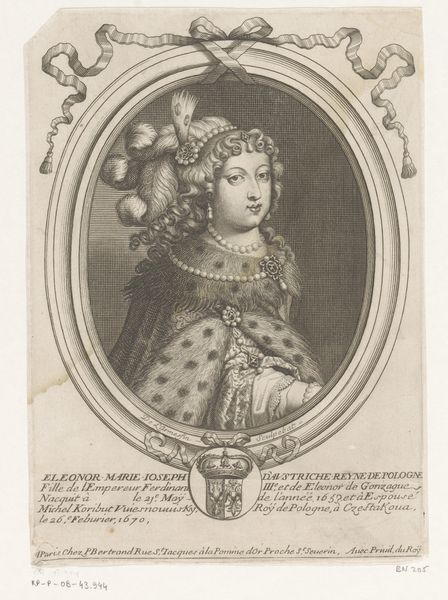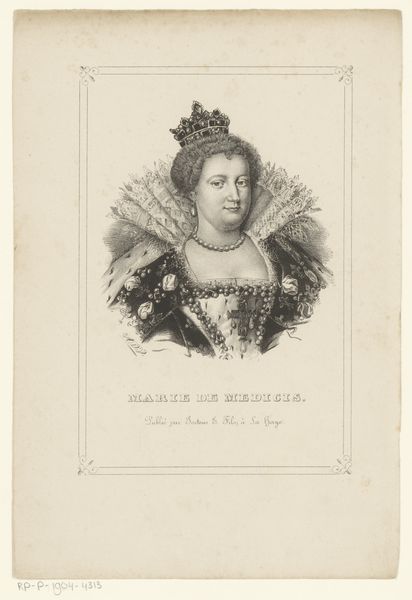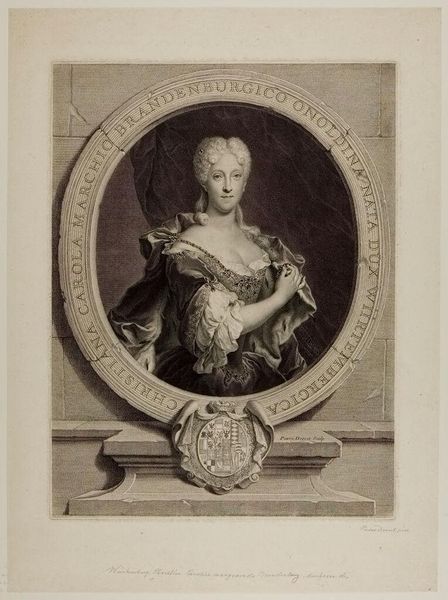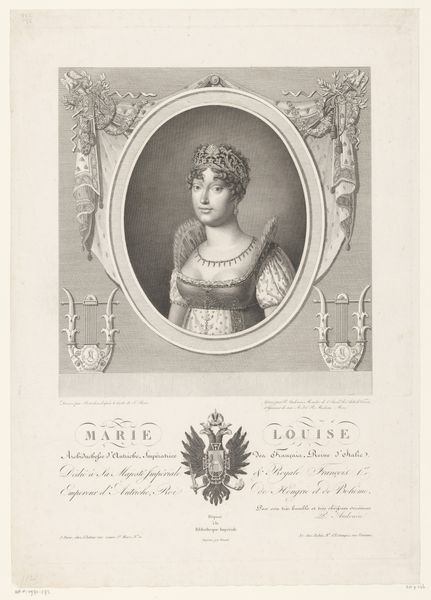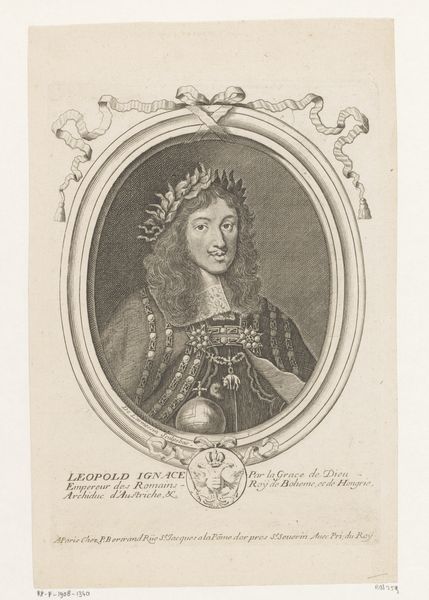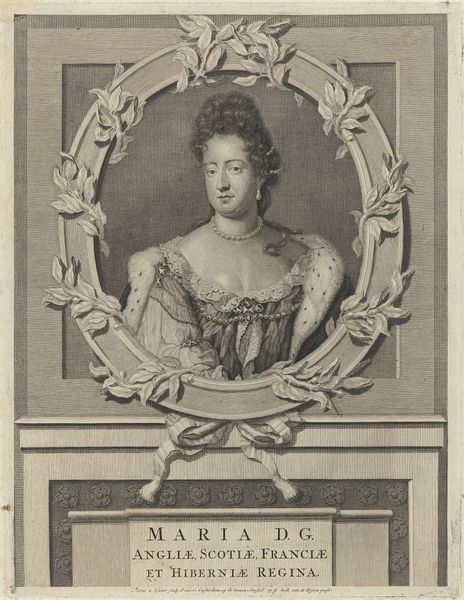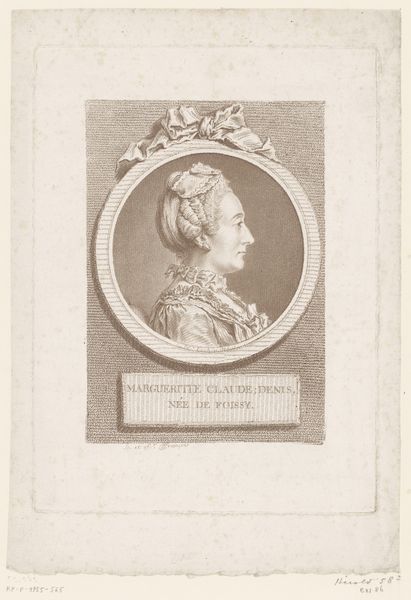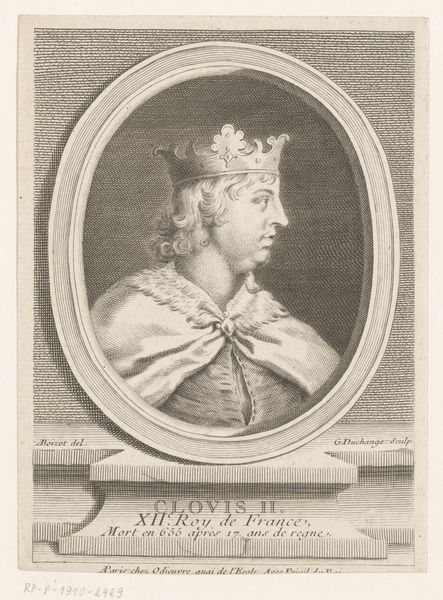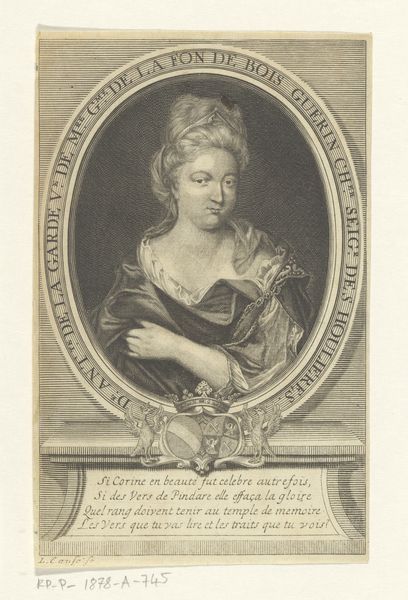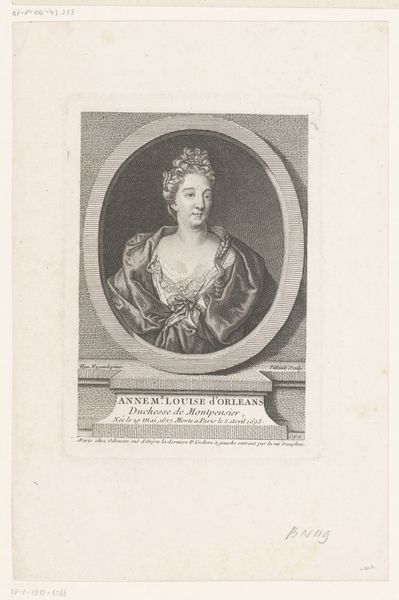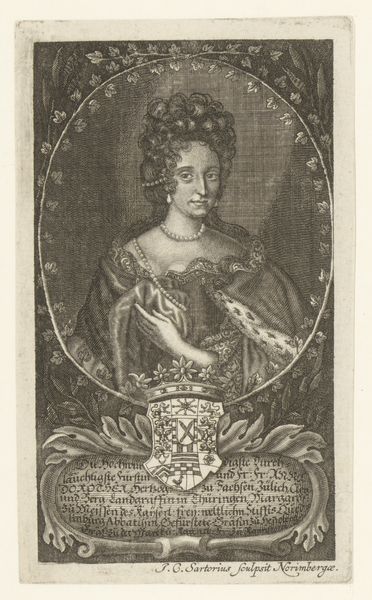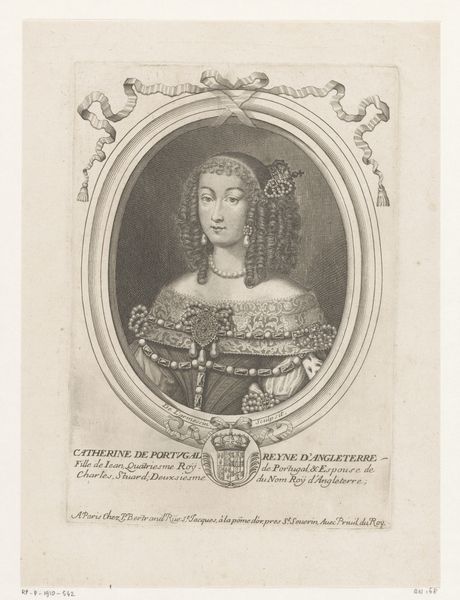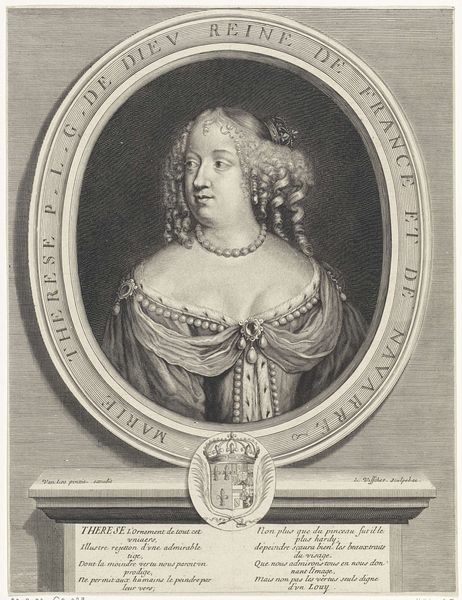
#
aged paper
#
photo restoration
#
parchment
#
archive photography
#
historical photography
#
old-timey
#
19th century
#
golden font
#
historical font
#
columned text
Dimensions: height 420 mm, width 295 mm
Copyright: Rijks Museum: Open Domain
Curator: The almost ghostly quality of this engraving immediately strikes me. There's something so haunting about the past captured in such a delicate medium. Editor: Delicate, yes, but also deliberate. This is "Portrait of Marie Thérèse Charlotte of France," dating to around 1815. The artist is Pierre Audouin, working here with engraving. You can find it here in the Rijksmuseum collection. Curator: Audouin perfectly renders her with the trappings of royalty--a heavy mantle and that incredible floral headpiece— yet I’m not getting a sense of regal power from her. It almost feels like a carefully constructed facade, designed to project a certain image but failing to hide a deep sadness. The wispy flowers may suggest the ephemeral nature of earthly power. Editor: She certainly lived through tumultuous times, as the sole surviving child of Louis XVI and Marie Antoinette. Think about what this portrait would signify in 1815: the Bourbons restored, but the revolution still looming in collective memory. Audouin uses symbolism not only to glorify but to legitimize that precarious reign. Consider also how displaying portraits such as these in public institutions served as reminders of who held power. Curator: And notice how the oval frame containing her portrait is then framed again within a rectangular structure containing dedicatory text. She’s held captive within representation upon representation! All the while, those meticulously rendered textiles around her--the lace collar, the folds of her gown--draw the eye, offering tactile comfort but also subtly reinforcing societal expectations of women. Editor: Indeed. Engravings like this circulated widely. They visually cemented identities and propagated very particular ideologies. Note how her title, Madame la Duchesse d'Angoulême, takes precedence on the tablet below the portrait itself. We also have a crown over the French lilies— these symbols are vital to understanding its purpose in a post-revolutionary context. Curator: For me, there is that lingering emotional echo—it transcends the calculated image and hints at a far more intimate truth about the weight of history. Editor: And for me, it serves as a stark reminder that the history we perceive is never neutral, but a carefully constructed narrative.
Comments
No comments
Be the first to comment and join the conversation on the ultimate creative platform.
